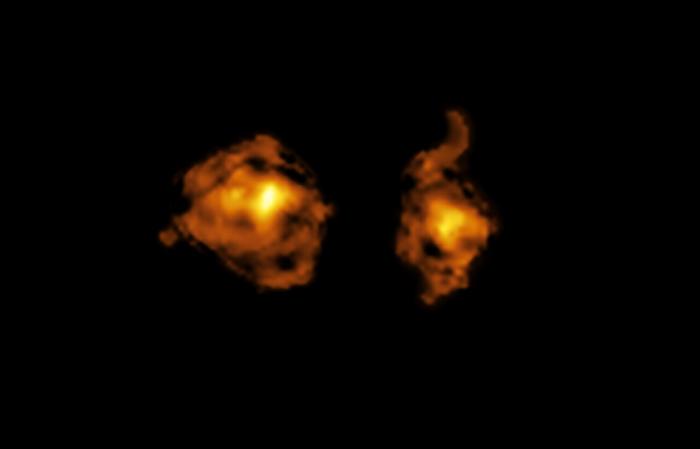Now Reading: Galaxies Collide, Unleashing Cosmic Radiation in Rare Phenomenon
-
01
Galaxies Collide, Unleashing Cosmic Radiation in Rare Phenomenon
Galaxies Collide, Unleashing Cosmic Radiation in Rare Phenomenon

Quick Summary
- Astronomers observed a phenomenon dubbed the “cosmic joust,” where one galaxy attacked another with quasar radiation, impairing the latter’s star formation abilities.
- The dueling galaxies repeatedly collided at speeds exceeding 500 miles per second, retreating and repositioning for new strikes.
- Observations were made using ESO’s Very Large Telescope and ALMA in Chile, capturing events nearly 11 billion years ago when the Universe was about 18% of its current age.
- Quasars-powerful radiation sources fueled by supermassive black holes-enable aggressor galaxies to disrupt gas clouds in victim galaxies, limiting new star formation.
- The collisions also feed the supermassive black hole within the attacking galaxy,sustaining its quasar energy for further interactions.
- Advanced telescope technology revealed these details; earlier instruments mistakenly labeled the jousting galaxies as one object.Future observations by upcoming tools like ESO’s Extremely Large Telescope promise deeper insights into galactic collisions.
Indian Opinion Analysis
The observation of a “cosmic joust” showcases both scientific ingenuity and technological advancements in astronomy that have implications for India’s expanding space research capabilities. As India develops initiatives like Gaganyaan and builds collaborative ties with international observatories such as those in Chile, studies like this underscore potential directions for domestic astronomical pursuits-including efforts to understand universe evolution and phenomena affecting star formation over billions of years.
For India’s scientific community striving towards ambitious goals in astrophysics through ISRO or collaborations with institutes globally, utilizing advanced instruments such as those employed here could bridge gaps between theoretical models and empirical evidence on cosmic processes crucial to understanding fundamental worldwide laws.
Read More: Light Emitted by a Distant Galaxy Pierces Through the Early Universe’s Fog
























